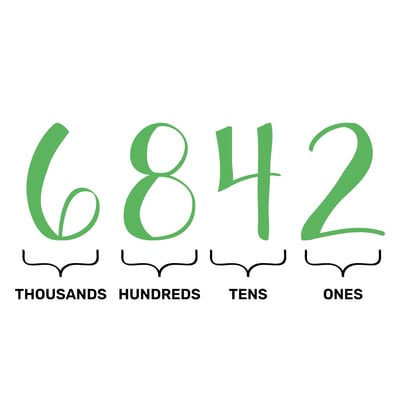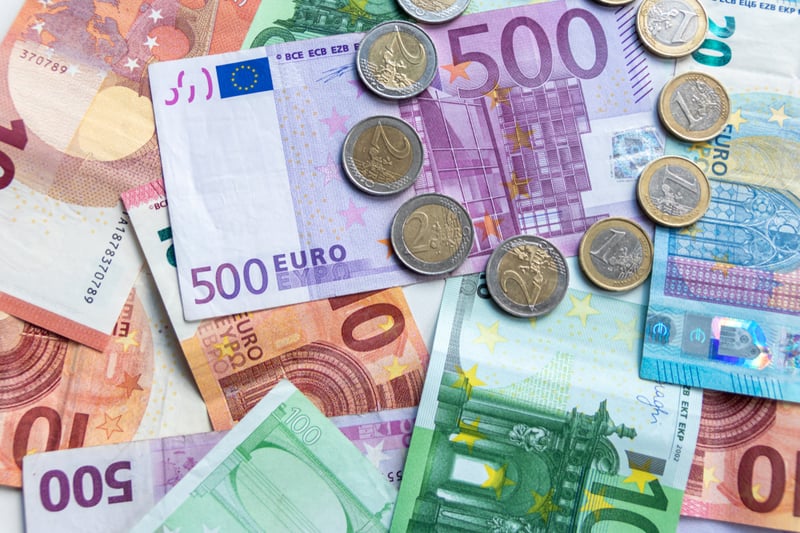In the Numbers 1 unit, we gave you an overview of many different types of numbers, and we practiced with just 0-19. Now it’s time to pick up where we left off, so we can start using higher numbers.
The lessons in this unit will focus on Portuguese numbers in the tens, hundreds, and thousands.
First, let’s review:
How to Form Portuguese Numbers in the Tens
So you’ve learned the Portuguese numbers from 0-19, as well as the multiples of 10.
But what about forming numbers in-between, like 25 or 42 or 87? For these, you simply need the word eand .
Now just think of the numbers as “twenty and five”, “forty and two”, “eighty and seven”, and so on.
Remember that this doesn’t apply to the numbers between 11-19. That said, you may have noticed that 16-19 all start with dez, and end with the word for the number in the ones digit (e.g., dezassete – 17), so those few do follow a sort of similar pattern.
How to Form Portuguese Numbers in the Hundreds
For the most part, forming Portuguese numbers in the hundreds follows the same pattern as the tens:
But make sure to note that there are actually two ways to say 100: cem or cento.
Cem is used when the number stands alone, when it comes before any noun, and when it comes before higher numbers (e.g., “one hundred thousand”).
Cento is used before lower numbers:
- cento e um101, one hundred and one
- cento e vinte120, one hundred and twenty
- cento e cinquenta anos150 years
How to Form Portuguese Numbers in the Thousands
When you jump to the thousands, if the last two digits of a number are 00, you need to include eand in between the thousands and hundreds places. For example:
sete mil e trezentos7300 – seven thousand [and] three hundred
dois mil e quatrocentos2400 – two thousand [and] four hundred
But with other numbers in the thousands, the “e” is dropped between the thousands and hundreds.
mil trezentos e vinte e cinco1325 – one thousand three hundred [and] twenty [and] five
sete mil e três7003 – seven thousand [and] three
dois mil quatrocentos e vinte e três2423 – two thousand four hundred [and] twenty [and] three
dois mil e vinte e três2023 – two thousand [and] twenty [and] three
In the Numbers 3 unit, we’ll go even higher! 😮 But for right now, knowing up through the thousands should suffice for most everyday interactions.
Gender Agreement with Portuguese Numbers
When a Portuguese number stands alone, you always use the masculine form, such as duzentos200 or quinhentos500
But what about when the number comes before a noun? e.g., 2 euros (masculine), 5 people (feminine)
As you may remember from the cardinal numbers Learning Note, most numbers are “invariable”, meaning they only have one form, and do not change depending on the gender of the noun. For example:
três meninos3 boys and três meninas3 girls
However, there are some important exceptions, which are “variable”:
- the number 1
- the number 2
- numbers in the hundreds (starting at 200)
These each have 2 forms that depend on the gender of the noun they describe.
Examples

Let’s explore how these gender agreement exceptions rules apply to digits that appear in the ones, tens, hundreds, and thousands places of a number:
Ones Place
The number 1 can be either um or uma, and the number 2 can be either dois or duas.
- masculine:
- feminine:
As mentioned, the other one-digit numbers (0 and 3-9) are invariable. For example:
Tens Place
No need to match gender for numbers in the tens place – these are all invariable.
Hundreds Place
Starting at 200, all numbers in the hundreds place have masculine and feminine forms. It’s just a matter of changing the end of the word to –as if the noun is feminine. For example:
- masculine: duzentos euros200 euros | seiscentos e cinquenta e três animais653 animals
- feminine: duzentas pessoas200 people | quatrocentas e vinte e cinco árvores425 trees | mil setecentas e vinte crianças1720 children
Thousands Place
In the thousands, we have to consider the numbers 1 and 2 again. Only numbers in the 2000s match the gender of the noun. It can start with either dois mil (masculine) or duas mil (feminine).
- masculine: dois mil2000 | dois mil e vinte e um2021 | dois mil euros2000 euros
- feminine: duas mil pessoas2000 people | duas mil e vinte e uma pessoas2021 people | duas mil e três cartas2003 letters
For numbers in the 1000s, you can just say mil. You don’t have to say uma mil when it’s feminine. For example:
As mentioned, the other numbers (3000, 4000, etc.) are invariable. For example:



This is a great overview, but it will take quite some practicing to get used to remember the spoken numbers. With that in mind, I wish you had written the larger numbers in words on the flashcards rather than only in numbers – when revising and trying to memorise the words, it would be a lot more helpful to see 377 translated to trezentos e setenta e sete rather than the question being 377 and the answer just the same three numerics. Same comments for the other large numbers.
Olá and thanks for the feedback! If I’m not mistaken, in all the Numbers units, the numbers are written in full because they are the focus of the exercises. But it’s likely that this is not the case in other units that are dedicated to different topics. I’ll mark this as something we might want to reassess from our side 🙂
I think maybe this is referring to some of the q & a’s requiring numeric answers, when the prompt at the top of the question says to “Listen and type in Portuguese.” The speaker in the quest says, for example, “Oitenta e um” and that’s what you think you are meant to type, but instead you are meant to type “81.” Once I figured that out I then knew how to answer the subsequent questions, but it was initially confusing.
We use the digits (e.g. 81) as the default, since this is the way you will usually see and write numbers in real life. However, the system should also accept the words (e.g. oitenta e um) as correct. We also show the answer written in words down below, as a reference.
Let us know if you come across any where you are marked incorrect for writing it out, or where that extra section is missing. (If you’re using Smart Review, you have to click the “i” icon to see that section.)
I suppose there is no alternate form of saying “one thousand and X hundred” in Portuguese? Like “sixteen hundred” in English that stands for 1600. Which is slightly easier to say that “one thousand and six hundred”.
Actually, “mil e seiscentos” is not that hard/long to say. That’s why, in Portuguese, we don’t feel the need to have an alternate form for it, like in English. You could say dezasseis centenas… it’s technically correct, but no one says it. 🙂
I think it will great if you could make a pdf for masculine and feminine numbers – it is so confusing…. your PDF’s are fantastic!